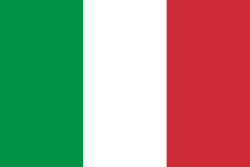When it comes to picturesque destinations in the Cape Verde archipelago, Maio Island often remains a well-kept secret. This enchanting island, covering an area of 269 square kilometers, is a place of natural beauty, historical significance, and cultural charm. Join us as we embark on a journey to discover the hidden gem of Maio Island.
Geographical Marvel
Maio Island, part of the Sotavento group of islands, is located to the south of Boavista and to the east of Santiago. With a distance of 25 kilometers from Santiago, Maio beckons travelers with its serene and unspoiled landscapes. The island, measuring 24 kilometers in length and 16 kilometers in width, is a haven for nature enthusiasts.
Despite its volcanic origins, Maio presents a predominantly flat terrain. The highest point on the island is Monte Penoso, standing at 436 meters above sea level. This unique combination of volcanic history and flat expanses sets the stage for an island of extraordinary beauty and biodiversity.
A Rich History
Maio Island's history is as intriguing as its landscapes. It was first discovered on May 1, 1460, a date that gave the island its name, "Maio." While its discovery dates back to the 15th century, the settlement of the island only began in the late 16th century.
One of the driving forces behind Maio's early settlement was its role in salt production. The island's salt, exported to destinations like Brazil, was a valuable commodity, and this industry thrived well into the 19th century. In addition to salt production, agriculture and herding played a crucial role in the island's economy.
However, the 20th century brought its own challenges, with frequent droughts prompting many of Maio's residents to seek opportunities elsewhere. Despite these hardships, the island persevered and found ways to bolster its economy.
Vila do Maio - The Island's Heart
The largest settlement on Maio Island is Vila do Maio, also known as Porto Inglês. The name "Porto Inglês" harks back to the days when numerous English ships frequented its shores. Today, Vila do Maio boasts a population of approximately 1,500 residents and serves as the island's administrative center.
During its heyday, the town thrived as a key port for salt export to Europe. A fort, built in the 18th century, still stands as a testament to the island's history, serving as a defense against pirate attacks.
Natural Wonders
Despite being one of Cape Verde's driest islands, Maio Island surprises with its lush landscapes. It boasts the largest forested area in the archipelago, covering approximately 3,500 hectares. This forest is primarily composed of acacia trees, the result of dedicated reforestation efforts.
The island's northern region has faced the erosive impact of strong northwesterly winds from the sea, leading to arid landscapes. However, Maio Island's long stretches of fine sandy beaches provide a stark contrast to these arid terrains, making it a paradise for beach lovers.
Maio Island is a place of contrasts, where history meets natural beauty, and where the resilience of its people has shaped a unique and captivating destination. As you plan your next travel adventure, consider the unspoiled paradise that is Maio Island, and uncover the treasures it holds.
Contact us to organise your adventure trip to Cape Verde

